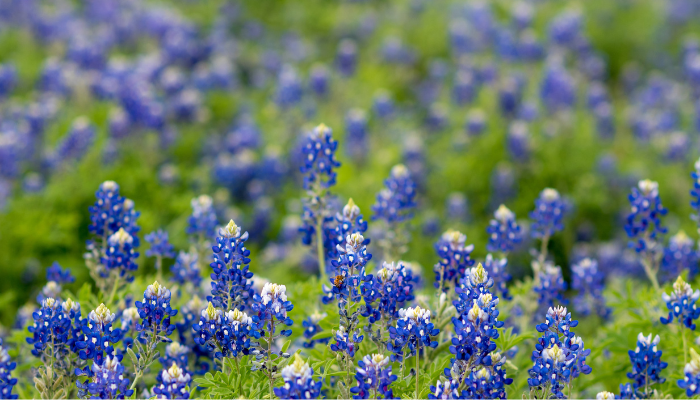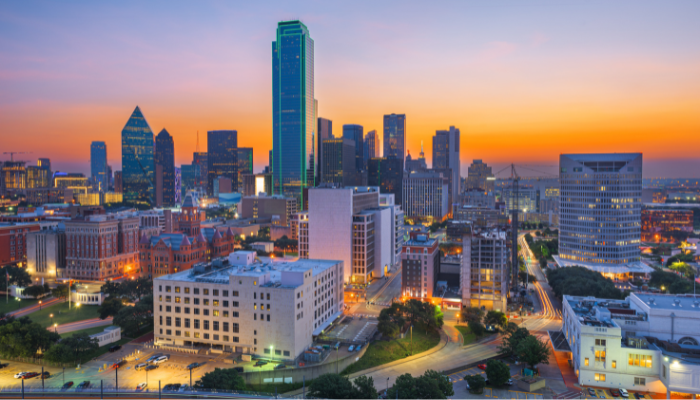Dallas/Fort Worth (DFW) is a dynamic, thriving destination with lots of friendly people. With a net gain of 418 residents per day, DFW is the fastest-growing urban area in the country. In 2024, the region’s population surpassed 8 million. Today’s metroplex stands in stark contrast to the early days when cattle herds rumbled along the Chisholm Trail, forded the Trinity River, and made their way north.
Are you considering a move to the area for work, family, or lifestyle preferences? This guide will offer honest insights into both the advantages and challenges of DFW living.
Job Opportunities
When it comes to jobs, DFW is certainly a land of opportunity. Bureau of Labor Statistics (BLS) data reveals an unemployment rate of 3.5%, well below the national average of 3.8%.
Many well-known companies maintain a presence in the DFW metroplex. You’ll find 24 Fortune 500 companies headquartered in the Dallas/Fort Worth area. Examples (with rankings in parentheses): American Airlines (86), Southwest Airlines (159) Exxon Mobil (7) McKesson (9), ATT (32).
Lockheed Martin, Boeing, and Dallas Avionics make DFW an important player in the aerospace industry. Major financial institutions maintain a serious presence here. They include JPMorgan Chase, Bank of America, and Citigroup. Other major employers in DFW are Toyota North America, United Parcel Service (UPS), and Texas Instruments.
Cost of Living
The cost of living in DFW compares favorably to other major urban areas around the country. Use this calculator to compare the cost of living when moving from one city to another.
About 59% of Dallas homes are renter-occupied. According to Zumper, Dallas rents average $1,788, similar to the previous year. About a third of apartment homes are less than $1500, while another third are $1500 to $2250.
There is no personal income tax in Texas. However, officials impose significant sales and property taxes to generate the required revenue. Texas has the highest property taxes relative to home values in the country. From 2019 to 2024, property taxes in Dallas County surged 32.7%. The sales tax rate in both Dallas and Fort Worth is 8.25%.
Climate
Outdoor activities are possible much of the year. On average, there are only 52 days per year with a tenth of an inch of rain or more. Heat is often a fact of life in the summer. The National Weather Service reports an average of 7.4 days of 100-degree highs in July and 9.7 such days in August.
Snow is a threat in the winter, although two-inch accumulations are quite rare. While residents embrace Dallas’ subtropical climate, keep in mind that bugs do too. Mosquitoes, ants, and other critters make their seasonal appearances.
Scenery
While the area’s landscape is dotted with parks, lakes, and greenways, it is relatively flat. However, you’ll still find inspiring displays of Bluebonnets and other wildflowers at area parks, arboretums, and preserves.
For more dramatic topography, residents take road trips to the Texas Hill Country several hours to the south. The landscape north and west of Austin includes hills, rock outcroppings, lakes, and even waterfalls.

Traffic
Are you moving from a place where mass transit, biking, and/or walking meet your needs? If so, DFW typically requires a different kind of thinking. The region is so spread out that most residents maintain personal vehicles. Rapid growth and congested traffic often go hand-in-hand, and DFW is no exception.
It takes time to get to more distant destinations. For example, it is a 60-mile drive from McKinney, a northeast Dallas suburb, to Fort Worth. It is best to get a feeling for your favored activities as you contemplate where you want to live.
Every year, rush hour traffic adds an average of 71 hours to DFW commutes. When possible, it is wise to live near work. Still, the average one-way commute of 26.9 minutes is close to the national average. Dallas Area Rapid Transit (DART) offers extensive light rail, commuter rail, and bus services across the metroplex. Register with a GoPass Tap card or credit card to get monthly fare-capping benefits.
Lifestyle and Entertainment
DFW offers myriad fun and memorable dining experiences — more than 11,000 in all. Michelin lists 23 Dallas restaurants in its online guide.
At Lucia in downtown Dallas, chef David Uygur is a perennial award winner. In the Design District, El Carlos Elegante offers authentic Mexican and exotic wines. In Fort Worth, Walloon’s lays claim to the coldest martinis in the area. Farm-to-table options abound, like Harvest in McKinney or Gemelle,
Experiences in the arts are plentiful. For example, in the Dallas Arts District, you’ll find the Dallas Museum of Art and the Dallas Symphony Orchestra. The Fort Worth Cultural District also offers a wealth of entertainment opportunities.
The North Texas climate lends itself to endless outdoor pursuits. The 180-mile Dallas Trail Plan offers hikers and bikers a diverse array of trails. Avid golfers have more than 100 public golf courses to choose from. Plentiful outdoor courts cater to those who love tennis. DFW is also a hotbed of growth in the emerging sport of pickleball.
Residents enjoy watersports across a network of large lakes. The 6684-acre Grapevine Lake is just north of DFW International Airport. White Rock Lake is in a Dallas city park that is home to the Dallas Arboretum. Lake Ray Hubbard is also nearby.
Luxury Apartment Living in DFW
The right luxury apartment community can become your personal refuge from the hustle and bustle of daily life.
For example, in northwest suburban Dallas, there’s Crest at Las Colinas Station. Residents enjoy quick access to DART’s 93-mile light rail system. Amenities include open floor plans, wood-plank-style flooring, island kitchens, and private porches/balconies. Residents also enjoy access to a pool w/tanning shelf, outdoor kitchen/grilling station, and fitness center.
McKinney’s Bell Tower Flats is in Adriatica Village. Architects modeled the planned community after a Croatian fishing village. Residents enjoy open layouts, nine-foot ceilings, wood-plank-style flooring, and gourmet kitchens. Select units offer a kitchen pantry, spa-style master bath, and private balcony/patio. Community amenities include an oversized pool and a state-of-the-art fitness center. Bell Tower Reserve is available to those 55 and up.
About Draper and Kramer
Draper and Kramer is a family-run, full-service real estate firm founded in 1893. Check out our luxury apartment residences in Chicago, Austin, Dallas/Fort Worth, St. Louis, Denver, and Phoenix.

Discover why more than 8 million people now call Dallas/Fort Worth home. From booming job opportunities and no state income tax to vibrant culture and luxurious apartment living, this insider’s guide covers everything you need to know before making the move.